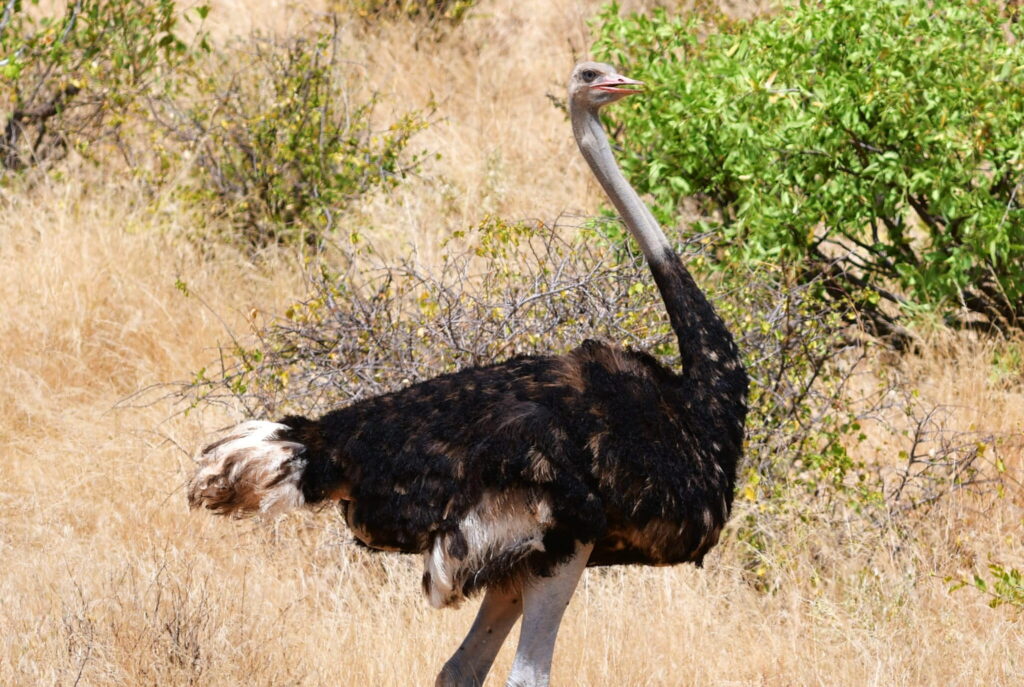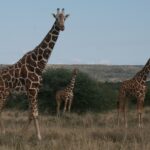In the semi-arid landscapes of northern Kenya and the wider Horn of Africa, five remarkable species have evolved to survive the harshest drylands on Earth.
They are known locally as the Samburu Special Five: the reticulated giraffe, Grévy’s zebra, beisa oryx, gerenuk, and Somali ostrich. But climate change is now threatening their fragile existence. Adapted to survive under some of Earth’s toughest conditions, these animals are now facing a threat beyond their evolutionary imagination.

Masters of Survival, Now Under Siege
Unlike the more globally familiar “Big Five”, the Samburu Special Five are specialists of scarcity.
The reticulated giraffe, for instance, can survive weeks without drinking water, extracting moisture from the leaves it chews. The slender-built gerenuk stands upright on its hind legs to forage high in the thorny branches of acacia trees. Grévy’s zebras, the largest and most endangered zebra species, have evolved blazing-white stripes that reflect heat and keep them cool.

Each animal bears unique characteristics that make them perfectly adapted to the specific arid ecosystems stretching across northern Kenya, southern Ethiopia, and parts of Somalia. But as extreme weather reshapes the region’s landscapes, their finely tuned survival mechanisms are starting to buckle.
“They can no longer compete with the pace of climate change,” says Samuel Mutahi, regional wildlife specialist with the International Fund for Animal Welfare.
“Their adaptations are so specific — if they are forced to move, they simply won’t survive.”
A Climate Crisis Is Breaking Their Habitat
The Horn of Africa is warming at twice the global average. The Intergovernmental Panel on Climate Change (IPCC) reports that drought cycles have accelerated from once every six years to once every three years since 2005.
Meanwhile, when it rains, it pours, literally. Unusually heavy downpours flood hard, dry soils, washing away precious topsoil and killing off regrowth.
 Grasslands have shrunk. Droughts have killed livestock and crops alike. Vegetation on which both wildlife and pastoralists depend has become scarce. The United Nations estimates that more than 22 million people in East Africa now face acute food insecurity as a result of prolonged drought.
Grasslands have shrunk. Droughts have killed livestock and crops alike. Vegetation on which both wildlife and pastoralists depend has become scarce. The United Nations estimates that more than 22 million people in East Africa now face acute food insecurity as a result of prolonged drought.
The result is competition: between pastoralists and wildlife, between human communities and fragile ecosystems.
“Livestock herders push wild animals away from water points or grazing spots to save their own herds,” says Mutahi.
“The wild animals lose. Every time.”
Human Conflict Adds To The Pressure
Beyond the shifting climate, the region is scarred by ongoing political conflict. In Somalia, civil war has raged for 35 years, accelerating the breakdown of systems that once helped protect wildlife.
Poachers have targeted species like the Grévy’s zebra for their valuable hides, selling them into illicit markets. In parts of northern Kenya and Ethiopia, armed groups now poach giraffes for meat.
And while pastoralism has traditionally supported harmonious coexistence between people and wildlife, enriching soils and helping regenerate grasslands, the balance has tipped. Decades of historic peace between herders and wildlife are splintering under the stress of climate collapse.
“This is not just a story about individual species,” explains Paul Lane, an archaeologist and climate researcher at Cambridge University.“It’s a story of ecological collapse meeting human crisis.”
Conservation Efforts Bring Hope — But Time Is Short
In April 2024, Kenya passed the Wildlife Conservation and Management Bill, a major boost for efforts to combat poaching and create a Wildlife Conservation Trust Fund. The bill also formalises the role of indigenous communities, the pastoralists who have lived on the land for centuries, as co-guardians.
Under this law, anyone convicted of poaching endangered wildlife may face up to 10 years in prison or a fine of 5 million Kenyan shillings (around $39,000). That’s significant in a country where the average income is $2,200 a year.
Yet laws alone won’t solve the crisis. Experts warn that more climate resilience funding and urgent action to preserve natural habitats are needed.
Nature-based solutions like restoring grasslands, training local youth in anti-poaching skills, and expanding community-led conservancies are proving effective, but underfunded.
The Samburu Special Five are more than wildlife attractions. They are part of a unique, endangered ecosystem that has sustained life, human and wild, for millennia. Saving them means saving an entire way of life from the brink.











